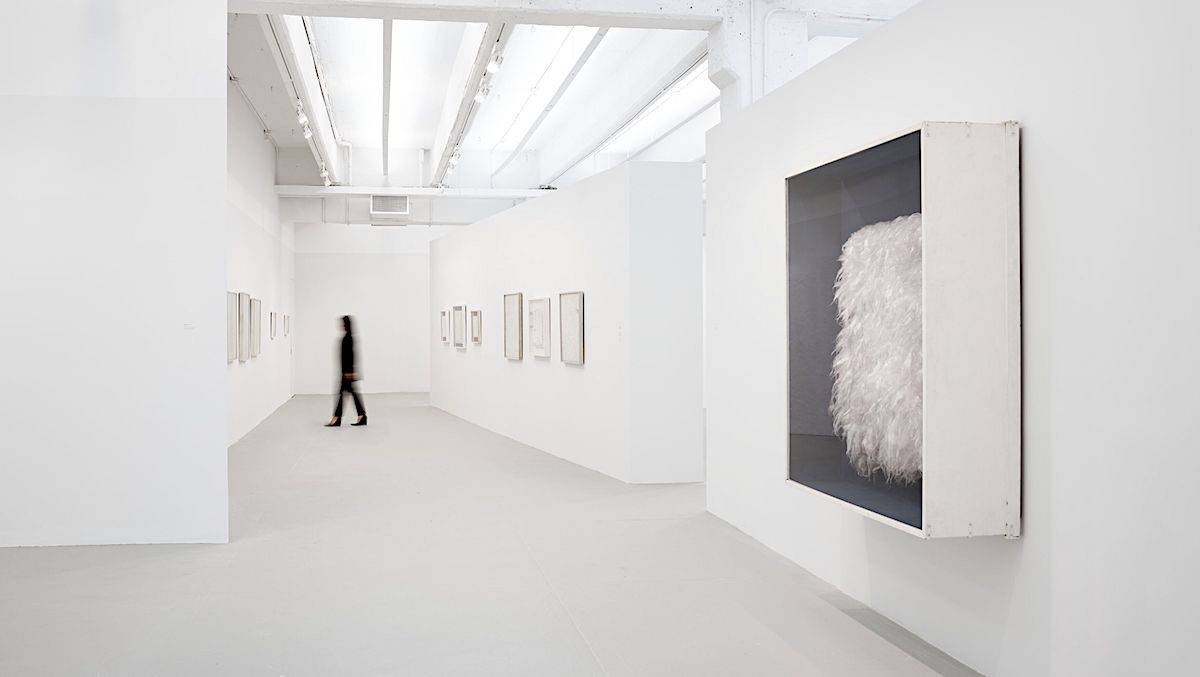Self-taught artist and avant-garde predecessor to the Arte Povera movement, Piero Manzoni was born to an aristocratic family in Soncino, Italy in 1933. His singular non-conformist creativity blossomed during Italy’s post-war boom years of consumerism and communism. Manzoni’s use of the grid and everyday materials, as well as his Warholian creation of serial works and media manipulation, feel both surprisingly modern and meditative.
This exhibition is a masterful testament to Piero Manzoni’s enduring influence on contemporary art
Soncino, a small town in the Po Valley of Lombardia and fifty miles from Milan, is also the locale of my husband’s family home. The beautiful small town boasts fourteenth-century churches, and a fifteenth-century walled castle, the Sforzesco Castello, where the young Manzoni exhibited his first teenage paintings. A statue by the town’s elementary school replicates one of Manzoni’s sculptures, “Base Magica”, inviting the viewer to step into the two bronzed footprints atop a pedestal. Thus, the viewer transforms into a living sculpture, a concept Manzoni frequently played with. Local organizers of the Soncino Biennale continue to be inspired by the artist’s revolutionary vision.

Superbly curated by Rosalia Pasqualino Di Marineo, Director of Piero Manzoni Foundation in Milan, the two floors focus on separate important series. Seventy “Achromes”, shown in the second-floor gallery, create a monochromatic wave of cotton, fibreglass, sewn cloth, rabbit fur, textile and straw. Frequently using kaolin, a white clay, Manzoni covered bread rolls in the material and placed them in a four by four grid. The grid reappears consistently, whether rendered in cotton balls, stones or burnt wood. First created in 1957, Manzoni made 800 Achromes, in a formal investigation exemplifying proto- conceptualism.
Using notes Manzoni penned in a 1961 letter to his friend Henk Peeters, two rooms have been specifically realized for this show. One is shrouded in all white fur, and the other, painted fluorescently, changes in subtle gradations of white light. Eloquently immersive, the rooms embody the artist’s conceptual and performative ideals.
One flight up, “Linee” commences with a photo of the young, fresh-faced artist unscrolling one of his uninterrupted ink and brush lines. In the first major survey of this series,90 brush lines, from short, simple marks to long bands rolled on paper strip are exhibited. Once finished, the ink and paper works were measured, rolled, and sealed in closed black cardboard canisters, details marked on a manila label. A short movie, produced in 1961, presents one of Manzoni’s Milanese openings, as a crowd of bohemians reacts to the line series. The ironic short was shown in theatres before actual feature presentations.
An inclusion of artists continuing the Manzoni dialogue presents an interesting trajectory. If his own inspirations came from viewing Marcel Duchamp and Yves Klein, later artists continue to reflect Manzoni’s ideas. Selected works include drawings and prints by Agnes Martin, Sol LeWitt, Barnett Newman and Anne Truitt.
Perhaps best known for his cans of excrement, the artist priced 90 cans of the 30-gram works at the current market prices for gold. (Manzoni’s father owned a canning factory.) Signing models, both clothed and nude he created “Living Sculptures.” At twenty-nine, Manzoni died of a heart attack in his Milanese studio.
“Materials of His Times” and “Lines” is a masterful testament to Piero Manzoni’s enduring influence on contemporary art.
Piero Manzoni ‘Materials of His Time’ and ‘Lines’ Hauser & Wirth New York until July 26

